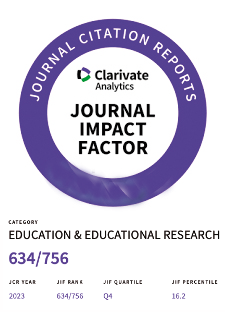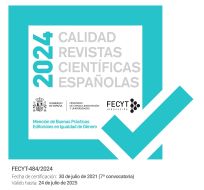The teaching of drawing between utilitarian and patriotic orientation in Argentinean elementary school (1904-1910)
DOI:
https://doi.org/10.5944/hme.12.2020.25448Keywords:
Drawing, artistic education, Martin Malharro, nationalism, working.Abstract
In this paper we study the conception of drawing in public elementary school in Argentina and its relationship with the previous orientation based on education for work and cultural homogenization. We also explore its connections with the patriotic trend towards education in general upon approaching the celebrations for the Centennial of the May Revolution. Likewise, we examine the discipline’s appropriation of pedagogical currents in circulation at the time and its particular interest in experimental psychology and pedagogy. Finally, we review its contribution and resulting tension with school policy under the administration of José Ramos Mejía at the head of the National Council of Education, which sought to form patriotic sentiment in the youth population and adopt new initiatives in artistic education.
Downloads
References
Artundo, Patricia. «Bibliografía crítica de Martín A. Malharro: el dibujo como agente de educación». Boletín del Instituto de Teoría e Historia del Arte Julio E. Payró 9 (2003): 73-108.
Augustowsky, Graciela. «Las paredes del aula. Un estudio del espacio dispuesto por docentes y alumnos/as en la escuela primaria». Arte, Individuo y Sociedad 15 (2003): 39-59.
https://revistas.ucm.es/index.php/ARIS/article/view/ARIS0303110039B.
Bottarini, Ricardo. «Leer, escribir, votar: la conflictiva definición del curriculum ciudadano». En Para una historia de la enseñanza de la lectura y la escritura en la Argentina: del catecismo colonial a La Razón de Mi Vida. Dirigido por Héctor Cucuzza y Pablo Pineau, 77-105. Buenos Aires: Miño y Dávila Editores, 2002.
Carli, Sandra. Niños, pedagogía y política. Transformaciones de los discursos acerca de la infancia en la historia de la educación argentina entre 1880 y 1955. Buenos Aires: Universidad de Buenos Aires/Miño y Dávila, 2002.
Carretero, Mario y James Voss. Aprender y pensar la historia. Buenos Aires: Amorrortu, 2004.
Dosio, Patricia Andrea. «Aprender a dibujar los contornos del país: Vínculos entre la enseñanza del dibujo escolar y los conocimientos geográficos en el Buenos Aires finisecular (1880-1900)». Caderno de Geografia 24, no. 2 (2014): 90-104. https://www.aacademica.org/patricia.andrea.dosio/9.
Dosio, Patricia Andrea. «Entre el atelier, la escuela y la fábrica: La Sociedad Estímulo de Bellas Artes y la capacitación de mano de obra urbana en el Buenos Aires decimonónico». Reflexión Académica en Diseño y Comunicación 25, no. 23 (2014), 93-99.
González Leandri, Ricardo. «Miradas médicas sobre la cuestión social. Buenos Aires a fines del siglo XIX y principios del XX». Revista de Indias 60, no. 419 (2000): 421-435. doi:http://dx.doi.org/10.3989/revindias.2000.i219.513.
Halperin Donghi, Tulio. El espejo de la historia. Problemas argentinos y perspectivas latinoamericanas. Buenos Aires: Sudamericana, 1987.
Khol, Alejandro. Higienismo argentino. Historia de una utopía. La salud en el imaginario colectivo de una época. Buenos Aires: Editorial Dunken, 2006.
Lertora Mendoza, Celina. «Recepción de ideas filosóficas. Problemas metodológicos e histórico-críticos de su investigación. Estudio de caso: la filosofía argentina de 1890 a 1920». Cuadernos del Sur 31-32 (2001): 37-63.http://bibliotecadigital.uns.edu.ar/scielo.php?script=sci_arttext&pid=S1668-74342001001100003
Pellettieri, Osvaldo. Testimonios culturales argentinos: la década del 10. Buenos Aires: Belgrano, 1980.
Puiggrós, Adriana y Sandra Carli. Sociedad civil y estado en los orígenes del sistema educativo argentino. Buenos Aires: Galerna, 1991.
Puiggrós, Adriana y Rafael Gagliano. La fábrica del conocimiento: los saberes socialmente productivos en América Latina. Rosario: Homo Sapiens, 2004.
Vallejo, Gustavo y Marisa Miranda. «Evolución y revolución: explicaciones biológicas de utopías sociales». En El pensamiento alternativo en la Argentina del siglo XX, dirigida por Hugo E. Biagini y Arturo A. Roig, 403-417. Buenos Aires: Biblos, 2004.
Downloads
Published
How to Cite
Issue
Section
License
Authors who publish in Historia y Memoria de la Educación agree to the following terms:
- Authors retain copyright and grant the journal right of first publication with the work simultaneously licensed under a Creative Commons Attribution-NonCommercial 4.0 International that allows others to share the work with an acknowledgement of the work's authorship and initial publication in this journal.
- Authors are able to enter into separate, additional contractual arrangements for the non-exclusive distribution of the journal's published version of the work (e.g., post it to an institutional repository or publish it in a book), with an acknowledgement of its initial publication in this journal.
- Authors are permitted and encouraged to post their work online (e.g., in institutional repositories or on their website) prior to and during the submission process, as it can lead to productive exchanges, as well as earlier and greater citation of published work (See The Effect of Open Access).










